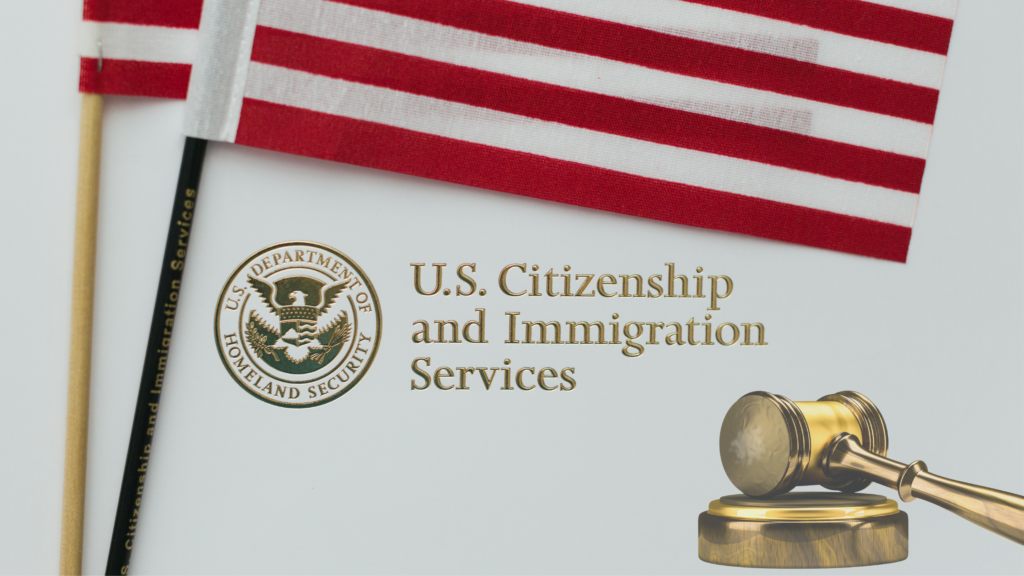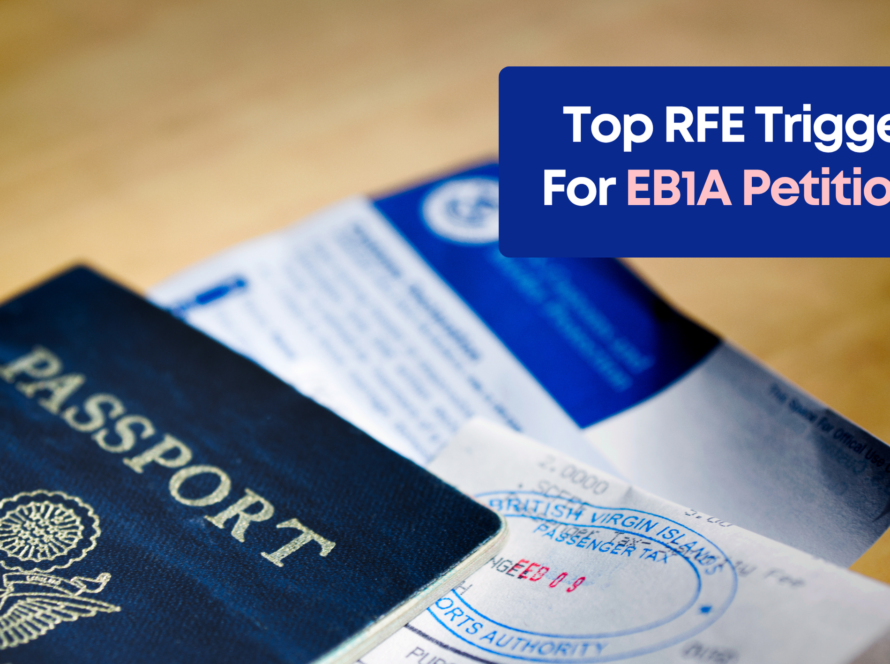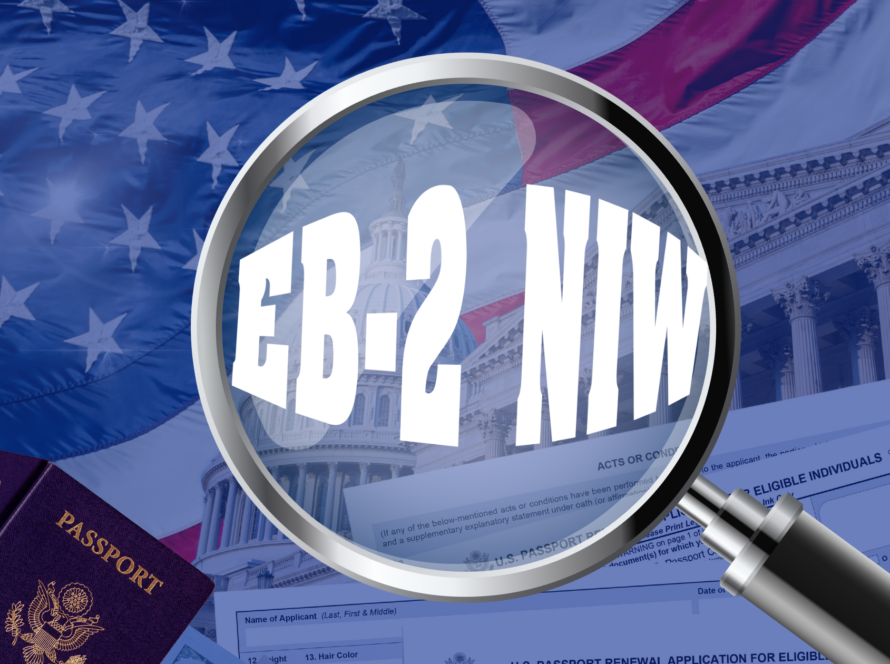
If you’re considering filing an EB‑1A petition, you’ve probably heard about the “Final Merits Standards” and wondered: what exactly makes a petition strong enough to succeed? Understanding these standards is crucial because even applicants who meet the basic eligibility criteria often struggle at this stage.
This blog will break down the EB1A Final Merits Standards in simple, actionable terms, showing you what USCIS looks for, how to present your achievements effectively, and what common pitfalls to avoid. By the end, you’ll have a clear roadmap for building a persuasive petition that stands out.
What are the EB1A Final Merits Standards?
The two‑step analysis
When you submit a Form I‑140 petition under EB‑1A, the adjudicating officer uses a two‑step framework:
- Initial evidentiary criteria – determine whether the evidence meets one‑time achievement (like a Nobel) or at least three of the ten regulatory criteria.
- Final merits determination – evaluate whether, in the totality of the evidence, the applicant has demonstrated sustained national or international acclaim and is “one of that small percentage who have risen to the very top of the field of endeavor.”
The key takeaway: even if you check the box of three criteria, that doesn’t guarantee approval. The EB1A Final Merits Standards demand that your record convincingly shows extraordinary ability in context.
Why it matters
Many petitioners believe that collecting documentation for three criteria is enough—but the real challenge lies in the Final Merits stage. USCIS officers review whether your body of work, reputation, influence, and future prospects rise above the standard checklist.
Key Elements of the EB1A Final Merits Standards
Understanding the EB1A Final Merits Standards is crucial because USCIS evaluates more than just whether an applicant meets three criteria. The Final Merits review looks at the overall strength, impact, and significance of an applicant’s accomplishments. Here are the key elements:
1. Sustained National or International Acclaim
USCIS expects evidence of ongoing recognition over time, not just a single achievement. This can include awards, publications, media coverage, or presentations that demonstrate recognition within the applicant’s field.
2. Being at the Very Top of Your Field
The Final Merits Standards require that the applicant belongs to the small percentage of professionals who have risen to the top of their field. This includes demonstrating exceptional influence, innovation, or impact that distinguishes the applicant from peers.
3. Quality and Significance of Evidence
It’s not about submitting a large volume of documents but providing evidence that meaningfully demonstrates extraordinary ability. USCIS looks for achievements that carry weight and reflect a high level of accomplishment.
4. Future Work in the U.S.
USCIS considers whether the applicant will continue to work at an extraordinary level in the U.S. and make a significant contribution to their field. Evidence should show ongoing professional engagement and impact.
5. Cohesive Narrative Across All Evidence The Final Merits review evaluates accomplishments as a whole. Each piece of evidence should support the overall case, creating a clear picture of the applicant’s extraordinary ability and influence.
Practical Insights for Applicants: Tips & Common Pitfalls
Tips for a strong EB1A Final Merits‑compliant petition
- Start early: Begin documenting your accomplishments well before filing. You’ll need time to gather media coverage, letters of recommendation, citation data, etc.
- Choose evidence strategically: More isn’t always better—select evidence that carries weight. For example, a high‑impact peer‑reviewed article cited many times may be stronger than multiple low‑impact pieces.
- Use expert letters: Independent recommendation letters from recognized authorities in your field can highlight your top‑tier status and help narrate your story.
- Highlight how your contributions benefit the U.S.: Although you are self‑petitioning under EB‑1A, showing that your work contributes to the U.S. economy, research, arts, business, whatever your field is adds credibility.
- Present a clear narrative: Organize your petition in a way that shows career progression, sustained impact, and rising recognition. Tie back to how you fit into the small elite in your field.
- Update evidence until filing: Ensure achievements are current—recent awards, speaking engagements, citations—so your record appears active and continuing.
- Be consistent: Your online presence, resumes, citations, letters, and your petition should all align—conflicting information can raise doubts.
Common pitfalls to avoid
- Counting weak criteria without context: Simply fulfilling three criteria with minimal evidence can trigger issues at the Final Merits stage.
- Relying only on local/regional recognition: The standard emphasises “national or international” acclaim; local only rarely suffices.
- Failing to demonstrate sustained achievement: A one‑time award ten years ago with little activity since is weaker under the Final Merits review.
- Overlooking future work details: If you don’t convincingly state how you’ll continue working at a high level in the U.S., the petition may suffer.
- Neglecting weak-evidence damage: Including a numerous pieces of weak evidence (e.g., minor conference attendance, unverified claims) can sometimes undermine your narrative.
Key Trends in EB1A Final Merits Standards you should know
The EB1A Final Merits Standards are often the deciding factors in whether a petition is approved. Understanding the trends in USCIS decisions can help applicants see what matters most and avoid common pitfalls.
- Many denials under EB‑1A happen because, while the petitioner met three criteria, they failed the Final Merits review.
- Recent policy updates emphasize that officers should consider the totality of the evidence in the Final Merits evaluation—especially relevant for STEM fields or non‑traditional occupations.
- Less than 10% of appeal decisions involve a true Final Merits analysis—meaning many cases might be denied earlier due to not meeting three criteria.
While specific approval‑rate data for EB‑1A with strong Final Merits is scarce publicly, the takeaway is clear: strong, well-presented evidence matters more than merely hitting the criteria count.
Frequently Asked Questions (FAQ)
Q1: What exactly are the “Final Merits Standards” under EB‑1A?
A: The Final Merits Standards refer to the second stage of the adjudication for EB‑1A petitions, where the officer evaluates whether the totality of your evidence shows that you have sustained national or international acclaim and are among the small percentage at the very top of your field.
Q2: If I meet three of the ten criteria, does that guarantee approval?
A: No. While meeting three criteria is necessary, it is not sufficient. You still must pass the Final Merits review, which evaluates the strength, significance, and coherence of your achievements in context.
Q3: Can weak or minor evidence hurt my case, even if I meet criteria?
A: Yes. Including weak evidence may dilute the strength of your petition and raise questions under the Final Merits review. It’s sometimes better to emphasize fewer, stronger pieces of evidence and exclude marginal ones.
Q4: How far back should my achievements go? Do they have to be recent?
A: While there is no fixed date-range, the USCIS looks for sustained acclaim, reflecting ongoing activity and recognition. Older achievements are less persuasive if there’s little recent activity to show continuation at the extraordinary level.
In Conclusion…
Navigating the EB1A Final Merits Standards requires thoughtful preparation, strategic evidence-selection, and a clear narrative of top-tier achievement. If you’re aiming to file under the EB‑1A category, keep in mind:
- Meeting three criteria is the first step.
- The Final Merits review is where your case is truly assessed in context.
- High-quality, well-contextualized evidence is far more persuasive than a long list of minor items.
- A compelling story of sustained acclaim, international or national recognition, and future U.S. contribution will strengthen your petition.
If you’re interested in exploring whether the EB‑1A route is suitable for your profile or comparing whether an EB‑2 NIW → EB‑1A strategy might make sense—our team of immigration consultants at My Green Card Story can help you evaluate your credentials and map out a strategic plan.
Book a Consultation today, to understand your best path for U.S. employment‑based immigration.
Let’s make Your EB2-NIW & EB1A journey a success! Stay connected with us! Follow My Green Card Story on all our socials for the latest updates, tips, and inspiring success stories. Got questions? We’re here to help!



